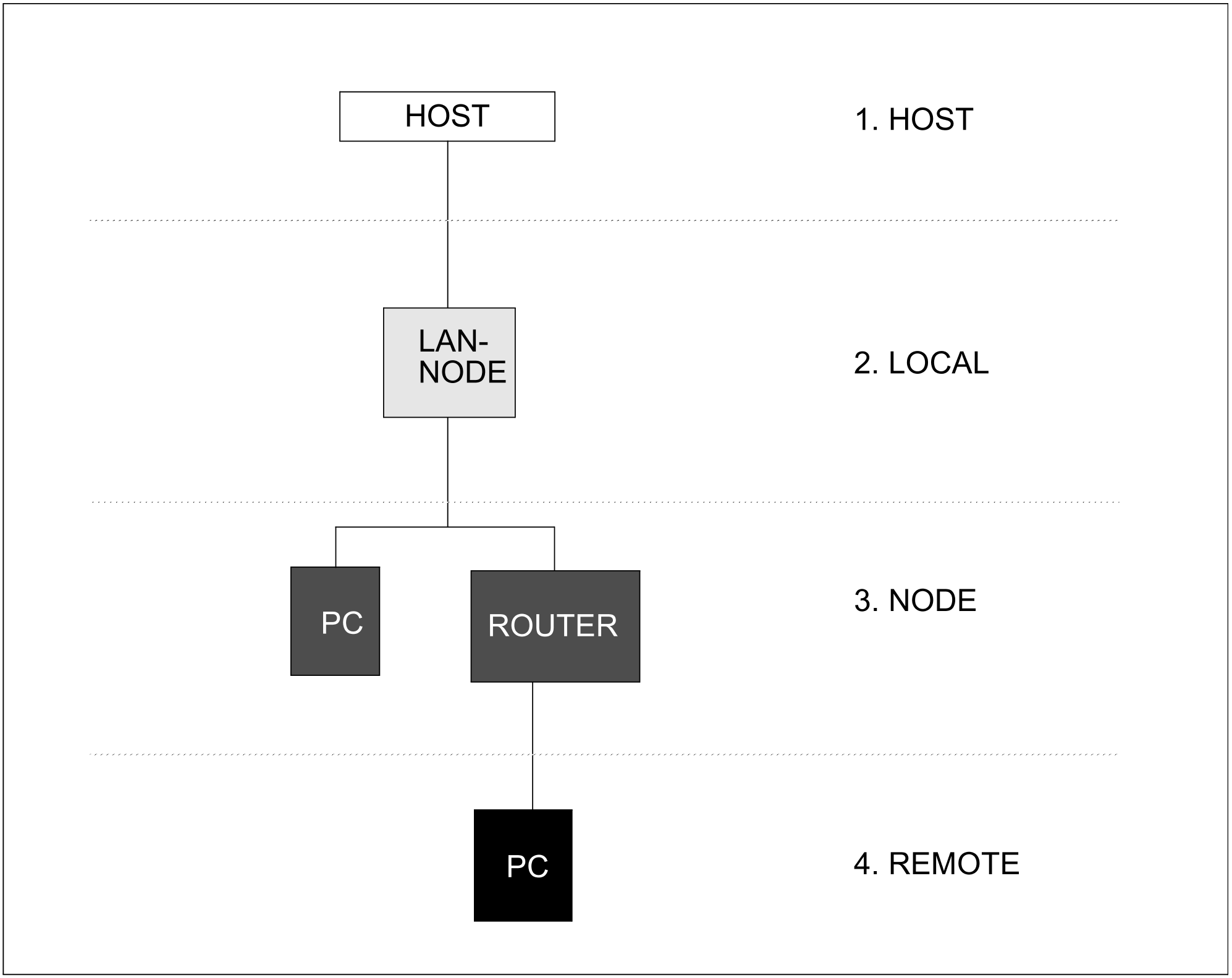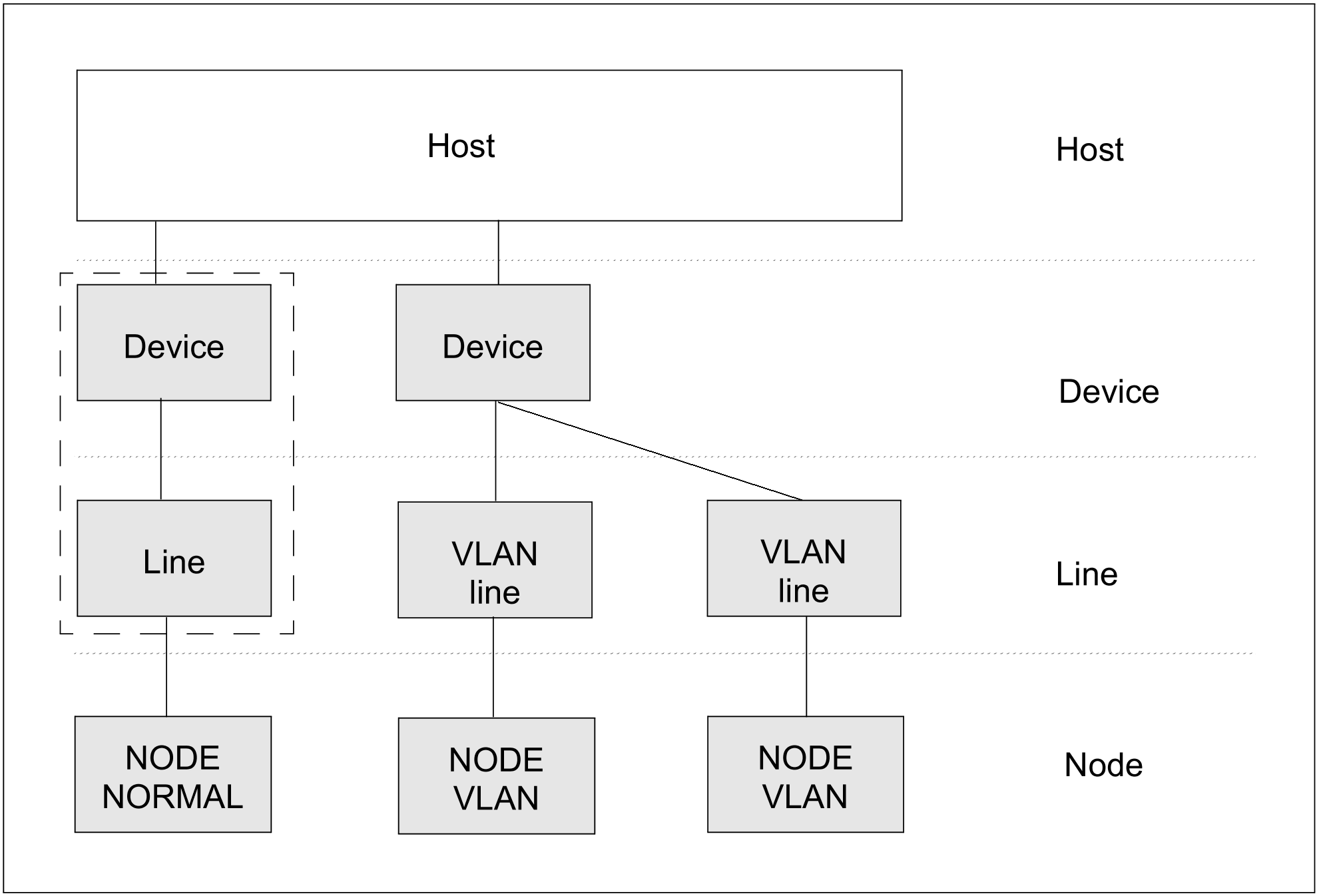The BCAM commands
BCACT
BCDAC
BCIN
BCOUT
DCOPT
DCSTART
implement the activate, initialize, deactivate, and terminate functions for a single object or a set of objects. The objects are split into groups for this purpose.
To define the groups, the network is viewed as a tree-like structure with four hierarchical levels, see the figure see section "Effective range of a BCAM command". The host forms the root of the structure.
The more recent BCAM-SDF commands
ACTIVATE-LINE
ACTIVATE-LINK-AGGREGATION
ACTIVATE-VLAN-DEVICE
ACTIVATE-VLAN-LINE
DEACTIVATE-LINE
DEACTIVATE-LINK-AGGREGATION
DEACTIVATE-VLAN-DEVICE
DEACTIVATE-VLAN-LINE
on the other hand specifically affect the objects to be processed.
The commands are only executed for objects that are known to BCAM.
This means that various groups of objects can be addressed, depending on the object specified in the command.
The object name, its designation, and the scope of the command are specified in the corresponding BCAM command. This defines the group of objects to which this command is to apply. If the command executes two functions, a hierarchical level must be specified for each individual function.
Example
/BCIN PROCESSOR=<processor-name>,INI=ALL,ACT=LOCAL
or
/BCACT NODE=<node-name>,ACT=ONLY
Each function executed is reported and acknowledged.
Object addressed in command | Parameter value | Scope of command |
(Virtual) host | ONLY |
|
LOCAL |
| |
NODE |
| |
ALL |
| |
LAN nodes | ONLY LOCAL |
|
NODE |
| |
ALL |
| |
Router | ONLY LOCAL |
|
ALL |
| |
Remote end system |
| |
Route |
| |
Line connection |
|
The BCAM-SDF commands are only executed for objects which are known to BCAM. Depending on the object specified in the command you can address different groups of objects in this way.
The name of the object is specified in the corresponding BCAM-SDF command.
Each function which is executed is reported and acknowledged.
Object addresses in command | Scope of command |
Link aggregation | Link aggregation |
Line connection | Activates:
Deactivates:
|
VLAN device | Activates:
Deactivates:
|
VLAN lines | Activates:
Deactivates:
|


